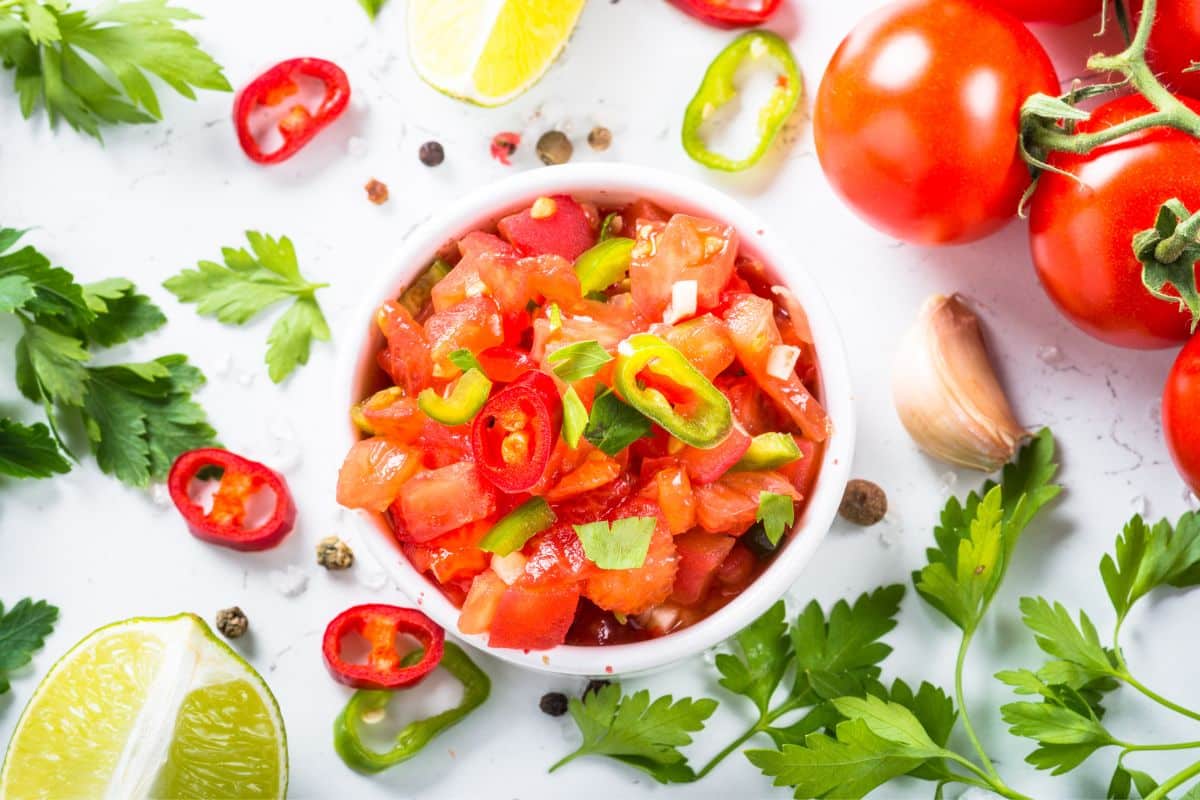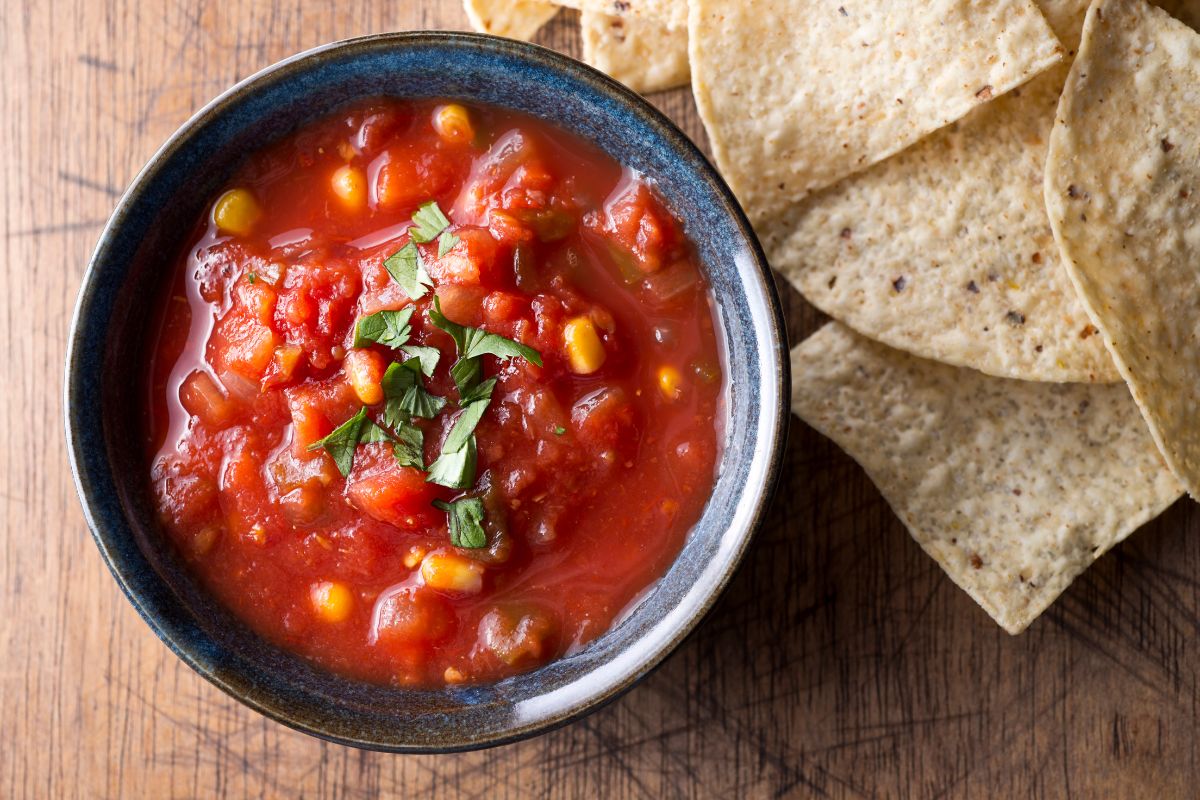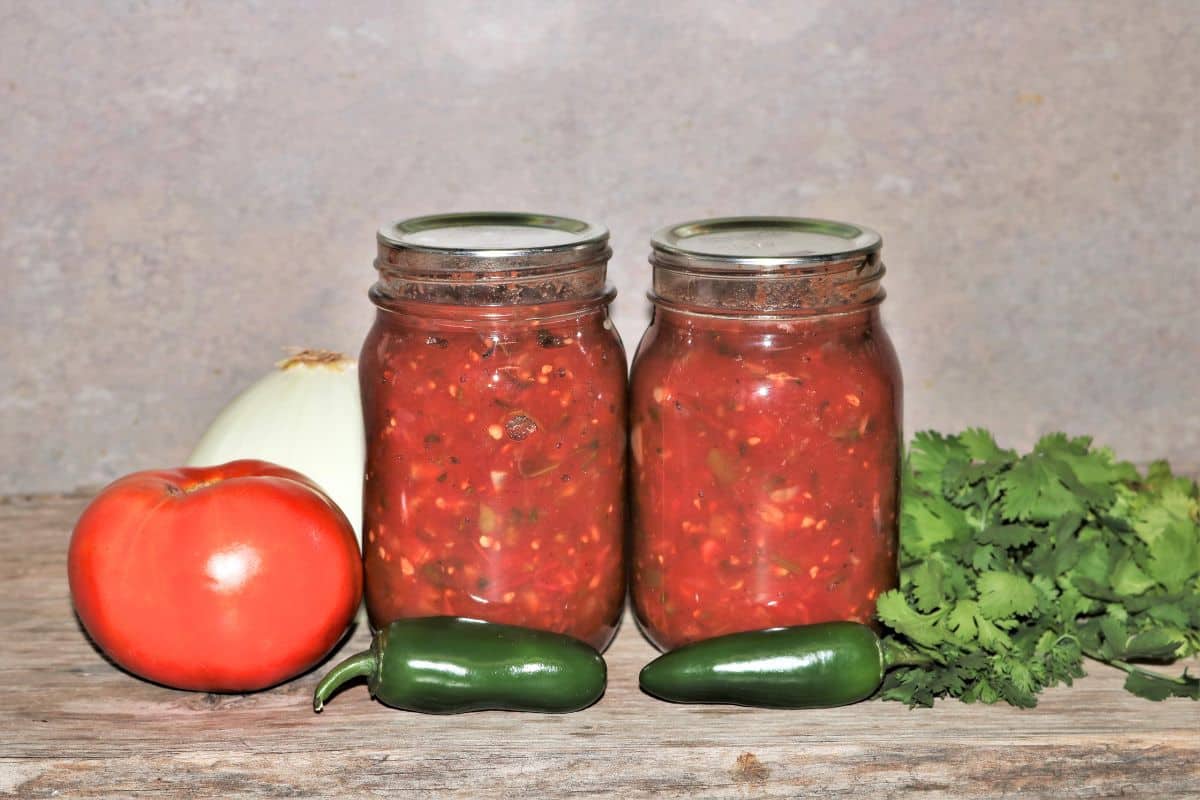Salsa is a popular condiment enjoyed by many around the world. However, like any perishable food item, it has a limited shelf life.
Factors such as preparation and storage can drastically affect the shelf life of salsa. Let’s take a look at how long it lasts.

How Long Does Salsa Last After Opening?
Freshly made homemade salsa without any preservatives or added vinegar will generally only last a few days in the fridge.
The life of salsa depends on the type of salsa and how it’s prepared. Salsa that is prepared with preservatives or has a high vinegar content can last for up to a month in the fridge.
Shelf Life
When it comes to storing salsa, the location plays a vital role in its shelf life. If you purchase an unopened jar of salsa, it can sit on your pantry shelf for up to 18 months.
Once the jar is opened, however, you’ll need to transfer it to the fridge and consume it within seven to ten days (depending on preservatives as mentioned above).
This timeline can vary depending on the type of salsa you have and whether it’s homemade or store-bought.
Homemade
Homemade salsa is a popular choice for many because it offers a fresher and more customizable taste than store-bought salsa.
However, when it comes to the shelf life of homemade salsa, it can be tricky to determine how long it will stay fresh.
The ingredients and recipe used play a significant role in determining the shelf life of homemade salsa.
Common ingredients found in homemade salsa include tomatoes, onions, chili peppers, garlic, and lime juice.
Each ingredient impacts the shelf life of the salsa in its own unique way. Tomatoes, for example, have a soft texture and high moisture content, making them more perishable than other ingredients.
Onions also have a soft texture and are prone to spoilage, while garlic has natural preservatives that can help extend the salsa’s lifespan.
Lime juice, on the other hand, can help slow down the oxidation process in the salsa and keep it fresh for longer.
When it comes to storing homemade salsa, it’s essential to transfer it to an airtight container and store it in the fridge immediately after making it. This will help prevent the salsa from being exposed to air and moisture, which can cause it to go bad quickly.
Homemade salsa can typically last up to a week when stored properly in the fridge, but this is just a guide.

How To Tell If Salsa Is Bad?
It is crucial to be able to tell if salsa is bad, as consuming expired or spoiled salsa can lead to food poisoning or other illnesses. So, how can you tell if your salsa has gone bad?
The most common signs of spoilage in salsa include:
- Mold growth
- Off colors
- Sour or irregular flavors
- Foul smells
If you notice any of these signs, it is best to discard the entire batch of salsa to avoid health risks.
Mold can appear on the surface of salsa as small spots or fuzzy patches that are green, white, or black in color.
Discoloration or off colors, such as a brownish tinge, indicate that the salsa may have started fermenting, rendering it inedible.
If the flavor is sour or off, it is likely that the salsa has gone bad, and consuming it could cause stomach problems. Foul smells, such as a strong or rancid odor, are another clear indication that the salsa has gone bad.
To minimize risks of contamination, if you buy it from a shop, it is essential to check the packaging thoroughly for leaks, bulges, or broken seals before opening it. If the package appears compromised, it is best to avoid consuming the salsa altogether.
Does Salsa Need to Be Refrigerated?
As we’ve already ascertained, to keep your salsa fresh and tasty, it is crucial to store it properly.
Refrigerating salsa is important because it slows the growth of bacteria and other microbes that can cause spoilage. Proper storage will also extend its shelf life, allowing you to enjoy it for a longer time.
Not refrigerating salsa can have serious consequences. Spoiled salsa can lead to food poisoning, which can cause symptoms like vomiting, diarrhea, stomach cramps, and fever.
These symptoms can be severe, especially for people with weaker immune systems, including children, the elderly, and pregnant women.
To ensure that your salsa is safe to eat, follow the two-hour rule. This rule states that any perishable food should not be left out at room temperature for more than two hours.
After two hours, bacteria can grow rapidly, which increases the chances of food poisoning. To prevent this, it is essential to refrigerate any leftover salsa within two hours of opening the jar or container or making a fresh batch.
Another essential tip for storing salsa is to always use clean spoons when scooping it out.
Using dirty spoons can introduce bacteria into the salsa, leading to spoilage and eventually food poisoning. So, keep a clean spoon handy and use it every time you serve salsa.
Although it may keep longer, It’s best to consume homemade salsa within two to three days of making it, as it will taste at its best.
If you prefer to freeze your salsa, you can extend its shelf life by up to six months. Proper labeling of the salsa container is essential if freezing, so you don’t leave it too long in the freezer.

Best Ingredients To Add To Salsa
The best ingredients to add to salsa to prolong its life are preservatives like vinegar, salt, and sugar.
Vinegar is known to act as a natural preservative and can help your salsa last a bit longer. Salt is also a great preservative and can help keep your salsa fresh.
Lastly, a bit of sugar can help extend the shelf life of your salsa. Adding these ingredients can help your salsa last a few weeks in the refrigerator.
Conclusion
In conclusion, it is important to be aware of the shelf life of your salsa, especially if it contains perishable ingredients.
Refrigerating it and following proper storage techniques can help extend its shelf life and minimize risks of contamination. Freezing your salsa can increase the life of salsa by 6 months.
Additionally, following the two-hour rule and using clean spoons when serving salsa are essential for keeping it safe to eat. Keeping these tips in mind can ensure that you enjoy your salsa at its best.






